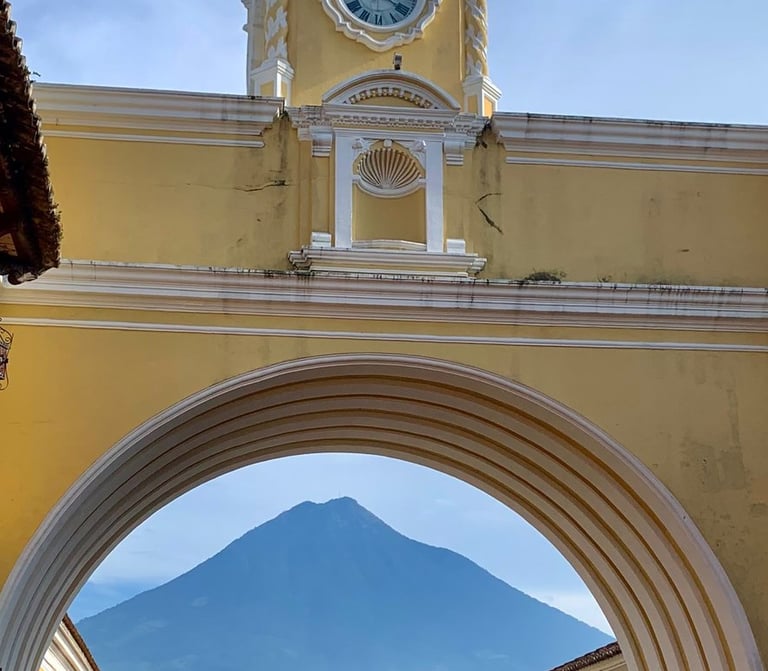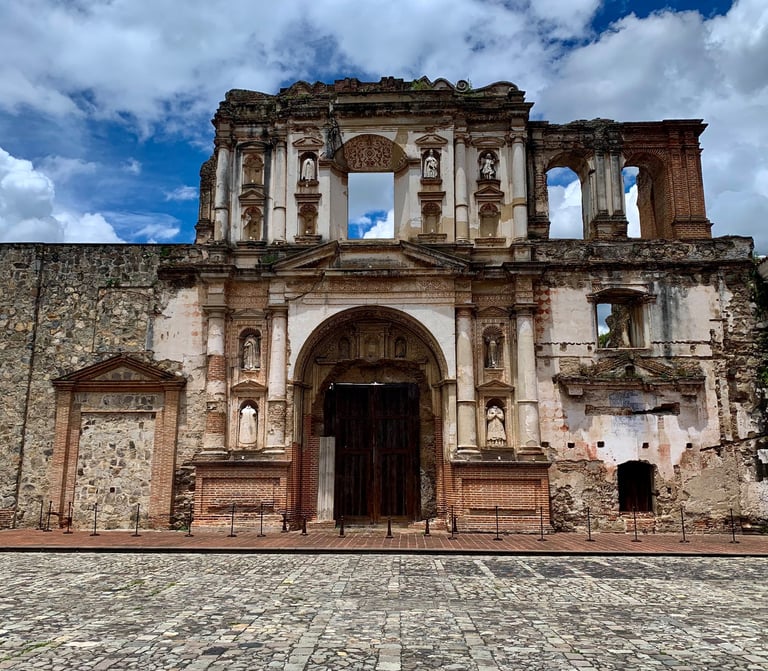Things to Know Before You Go to Antigua, Guatemala


Antigua Should Be on Your Radar
Antigua is located in southwestern Guatemala - about 45 minutes drive from La Aurora International Airport - where most travellers first arrive in the country. The city lies in an earthquake-prone region and is surrounded by three majestic volcanoes, including the inactive volcanoes of Agua and Acatenango and the active volcano of Fuego which can often be seen erupting in the backdrop of the city.
In 1543, Antigua became the third site for the capital of the Spanish colonial Captaincy-General of Guatemala and took the same name as the former two capitals, “Santiago de los Caballeros de Guatemala.” As the capital, many beautiful colonial buildings were built throughout the city. For more than 200 years, it served as the capital of colonial power covering most of modern-day Central America and Mexico’s state of Chiapas.
The city has experienced earthquakes, floods, and volcanic eruptions that have challenged its struggle to maintain its existence through destruction and reconstruction. Earthquakes in 1717 and 1751 caused significant damage to the city and there were discussions to move the capital to a less earthquake prone region, but it was not until after the massive earthquake of 1773 that officials decided a few years later in 1776 to move the capital to Guatemala City, which remains the capital today.
Despite official evacuation orders, the city was never completely abandoned and some of the residents stayed and rebuilt around the earthquake ruins of the old capital city which came to be known as “La Antigua Guatemala” or “old Guatemala.” Restoration efforts gained momentum after the President’s declaration of the city as a national monument in 1944 - and a law was passed in 1969 to protect, restore and conserve Antigua, and create the National Council for the Protection of Antigua Guatemala.
Unfortunately, another major earthquake hit in 1976, killing thousands and severely damaging the city again, creating yet another cycle of destruction and reconstruction. A few years later in 1979, Antigua became a UNESCO World Heritage Site, ramping up restoration efforts, and helping to eventually make it a very popular tourist destination.
Most visitors agree that Antigua is one of the most charming cities in the americas, due to its cobblestone streets, beautiful plazas, fountains, and baroque-influenced colonial architecture, including several earthquake ruins of buildings scattered throughout the city, as well as the three majestic volcanoes that stand tall in the backdrop.
Check out the Wander Yonder YouTube video below for a short video featuring an overview of Antigua, including highlights of things to do, see and eat.
Antigua is Generally Safe for Tourists
I stayed just outside the main tourist area of Antigua and never felt unsafe during the day or at night during my month-long stay. Although Antigua is generally considered to be a safe area, it does experience petty crime like most tourist areas. Be mindful of your belongings and surroundings at all times - and avoid doing anything that will make you a target, including wearing expensive jewellery, or flashing your expensive phone or camera, particularly while you are outside of the main tourist areas. Extra precaution should always be taken at night to avoid being alone on dark and empty streets.
Antigua is Located at High Altitude
Antigua has an average altitude of about 1500 meters (5000 feet) above sea level. Upon arrival, and particularly if you hike any of the surrounding volcanoes at higher altitudes, you may experience symptoms of altitude sickness, such as shortness of breath, tightening of your chest, headache, dizziness, nausea, fatigue, problems with sleep and loss of appetite. Symptoms usually begin within 12 to 24 hours of reaching higher elevation and get better within a day or two after your body adjusts.
In higher elevations, your body needs to work harder to maintain blood oxygen levels, increasing your respiration rate and leading your body to lose water faster than at sea level. Your risk of dehydration increases significantly. Places at higher altitude also have lower humidity, compounding the risk for dehydration. Drinking more water than usual is very important to alleviate symptoms and prevent dehydration. Health experts suggest increasing your water intake by an additional 1 to 1.5 litres for a total of 3-4 litres a day.
The Tap Water is Not Safe to Drink
Most people know that tap water is not safe to drink in Guatemala. However, many hotels and Airbnbs around the lake include drinking water as part of their services for guests through large refillable water containers or built-in water filter systems. I suggest asking if drinking water is included before you book a place around the lake.



